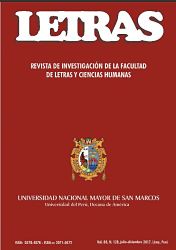Art and female political power through nineteenth-century portrait. Manuelita Rosas and Dolores Tosta de Santa Anna
DOI:
https://doi.org/10.30920/letras.88.128.3Keywords:
Art, Power and gender, Female portrait, Latin American painting of the nineteenth century, Manuelita Rosas, Dolores TostaAbstract
In Latin America, the bourgeois portrait arises from Independence, when this class, being in power, starts to play a crucial role. It is important to specify that it is only since the Republic that trustees' wives start to be portrayed in order to establish their socioeconomic and sometimes political status. Studying this type of portrait in detail leads to seeing art history from an unexplored angle: art, power and gender.
The following article addresses two female portraits located in national museums: Argentina and Mexico. They portray Manuelita Rosas and Dolores Tosta; the former, daughter, and the latter, wife, of questioned presidents, whose political lives occurred between 1830 and 1850. The signifi cance of this study consists in demonstrating that this pictorial activity, apart from its esthetic value, enables the analysis of art as an advertising element.







